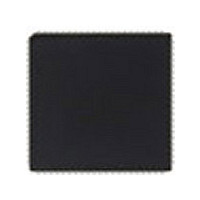MC68HC711K4CFN3 Freescale Semiconductor, MC68HC711K4CFN3 Datasheet - Page 120

MC68HC711K4CFN3
Manufacturer Part Number
MC68HC711K4CFN3
Description
Manufacturer
Freescale Semiconductor
Datasheet
1.MC68HC711K4CFN3.pdf
(290 pages)
Specifications of MC68HC711K4CFN3
Cpu Family
HC11
Device Core Size
8b
Frequency (max)
4MHz
Interface Type
SCI/SPI
Program Memory Type
ROM
Program Memory Size
24KB
Total Internal Ram Size
768Byte
Number Of Timers - General Purpose
8
Operating Supply Voltage (typ)
5V
Operating Supply Voltage (max)
5.5V
Operating Supply Voltage (min)
4.5V
On-chip Adc
8-chx8-bit
Instruction Set Architecture
CISC
Operating Temp Range
-40C to 85C
Operating Temperature Classification
Industrial
Mounting
Surface Mount
Pin Count
84
Package Type
PLCC
Lead Free Status / Rohs Status
Not Compliant
Available stocks
Company
Part Number
Manufacturer
Quantity
Price
Company:
Part Number:
MC68HC711K4CFN3
Manufacturer:
MOLEX
Quantity:
12 000
Part Number:
MC68HC711K4CFN3
Manufacturer:
MOTOROLA/摩托罗拉
Quantity:
20 000
- Current page: 120 of 290
- Download datasheet (4Mb)
Resets and Interrupts
5.5.1 Non-Maskable Interrupts
5.5.1.1 Non-Maskable Interrupt Request (XIRQ)
5.5.1.2 Illegal Opcode Trap
Technical Data
120
Non-maskable interrupts can interrupt CPU operations at any time. The
most common use for such an interrupt is for serious system problems,
such as program runaway or power failure. The three sources of
non-maskable interrupt are:
The XIRQ input is an updated version of the non-maskable NMI input of
earlier MCUs. Upon reset, both the X bit and I bit of the CCR are set to
inhibit all maskable interrupts and XIRQ. After minimum system
initialization, software can clear the X bit by a transfer from accumulator
A to condition code register (TAP) instruction, enabling XIRQ interrupts.
Thereafter, software cannot set the X bit and the XIRQ interrupt
becomes non-maskable.
I bit-related interrupts do not affect the X bit, which has a higher priority
than they do in the interrupt priority logic. When an I bit-related interrupt
occurs, the CPU sets the I bit after stacking the CCR byte, but the X bit
remains unaffected. When an X bit-related interrupt occurs, the CPU
sets both the X and I bits after stacking the CCR. The RTI instruction
restores the X and I bits to their pre-interrupt request state when it pulls
the CCR from the stack.
The MCU includes an illegal opcode detection circuit to avoid attempting
to process undefined opcodes or opcode sequences. This mechanism
works for all unimplemented opcodes on all four opcode map pages.
When the circuit detects an illegal opcode, it generates an interrupt. The
CPU responds by pushing the current value of the program counter,
which is actually the address of the first byte of the illegal opcode, on the
stack. The illegal opcode service routine can use this stacked address
as a pointer to the illegal opcode to correct it. To avoid repeated
•
•
•
Freescale Semiconductor, Inc.
For More Information On This Product,
XIRQ pin
Illegal opcode trap
Software interrupt instruction (SWI)
Go to: www.freescale.com
Resets and Interrupts
M68HC11K Family
MOTOROLA
Related parts for MC68HC711K4CFN3
Image
Part Number
Description
Manufacturer
Datasheet
Request
R
Part Number:
Description:
Manufacturer:
Freescale Semiconductor, Inc
Datasheet:
Part Number:
Description:
Manufacturer:
Freescale Semiconductor, Inc
Datasheet:
Part Number:
Description:
Manufacturer:
Freescale Semiconductor, Inc
Datasheet:
Part Number:
Description:
Manufacturer:
Freescale Semiconductor, Inc
Datasheet:
Part Number:
Description:
Manufacturer:
Freescale Semiconductor, Inc
Datasheet:
Part Number:
Description:
Manufacturer:
Freescale Semiconductor, Inc
Datasheet:
Part Number:
Description:
Manufacturer:
Freescale Semiconductor, Inc
Datasheet:
Part Number:
Description:
Manufacturer:
Freescale Semiconductor, Inc
Datasheet:
Part Number:
Description:
Manufacturer:
Freescale Semiconductor, Inc
Datasheet:
Part Number:
Description:
Manufacturer:
Freescale Semiconductor, Inc
Datasheet:
Part Number:
Description:
Manufacturer:
Freescale Semiconductor, Inc
Datasheet:
Part Number:
Description:
Manufacturer:
Freescale Semiconductor, Inc
Datasheet:
Part Number:
Description:
Manufacturer:
Freescale Semiconductor, Inc
Datasheet:
Part Number:
Description:
Manufacturer:
Freescale Semiconductor, Inc
Datasheet:
Part Number:
Description:
Manufacturer:
Freescale Semiconductor, Inc
Datasheet:











